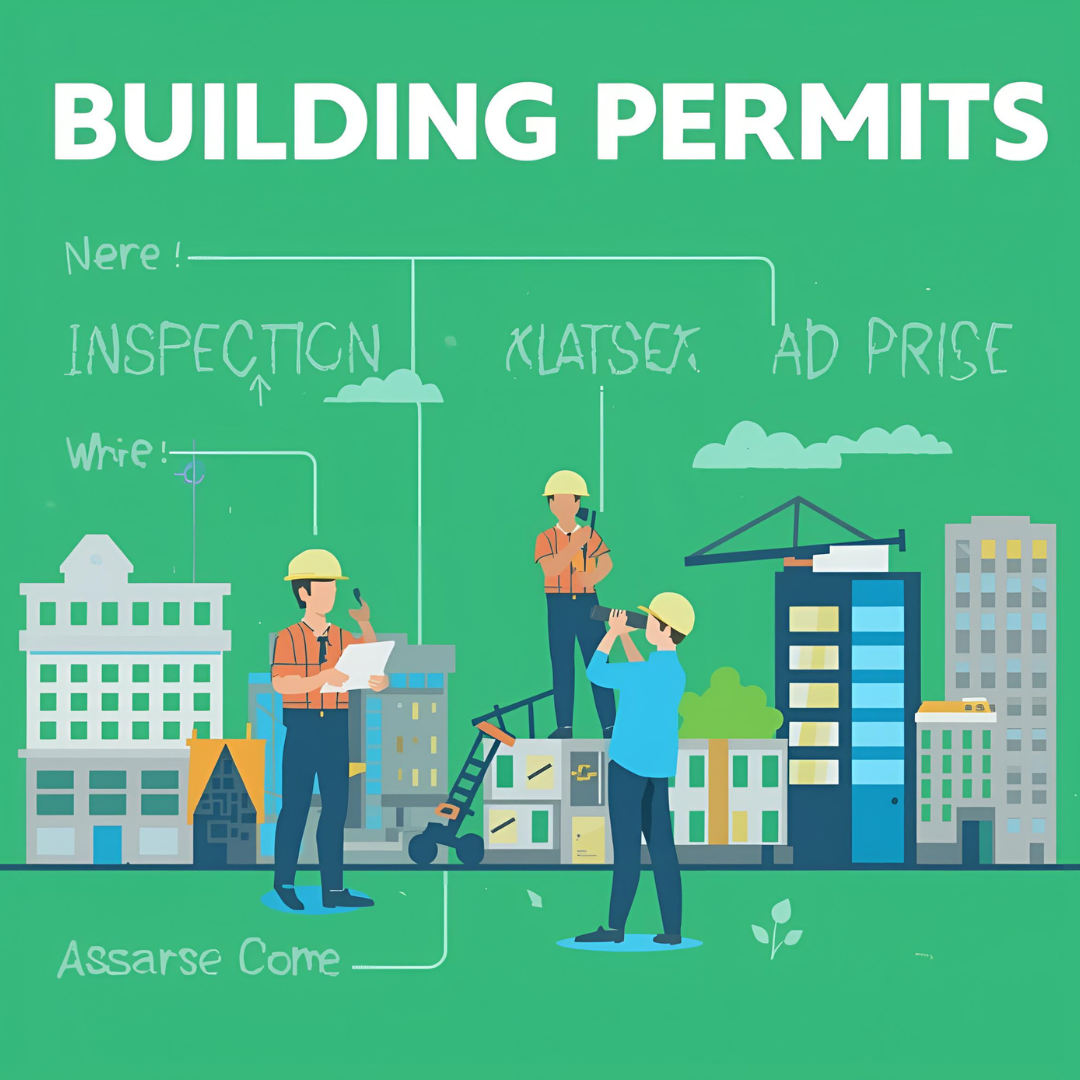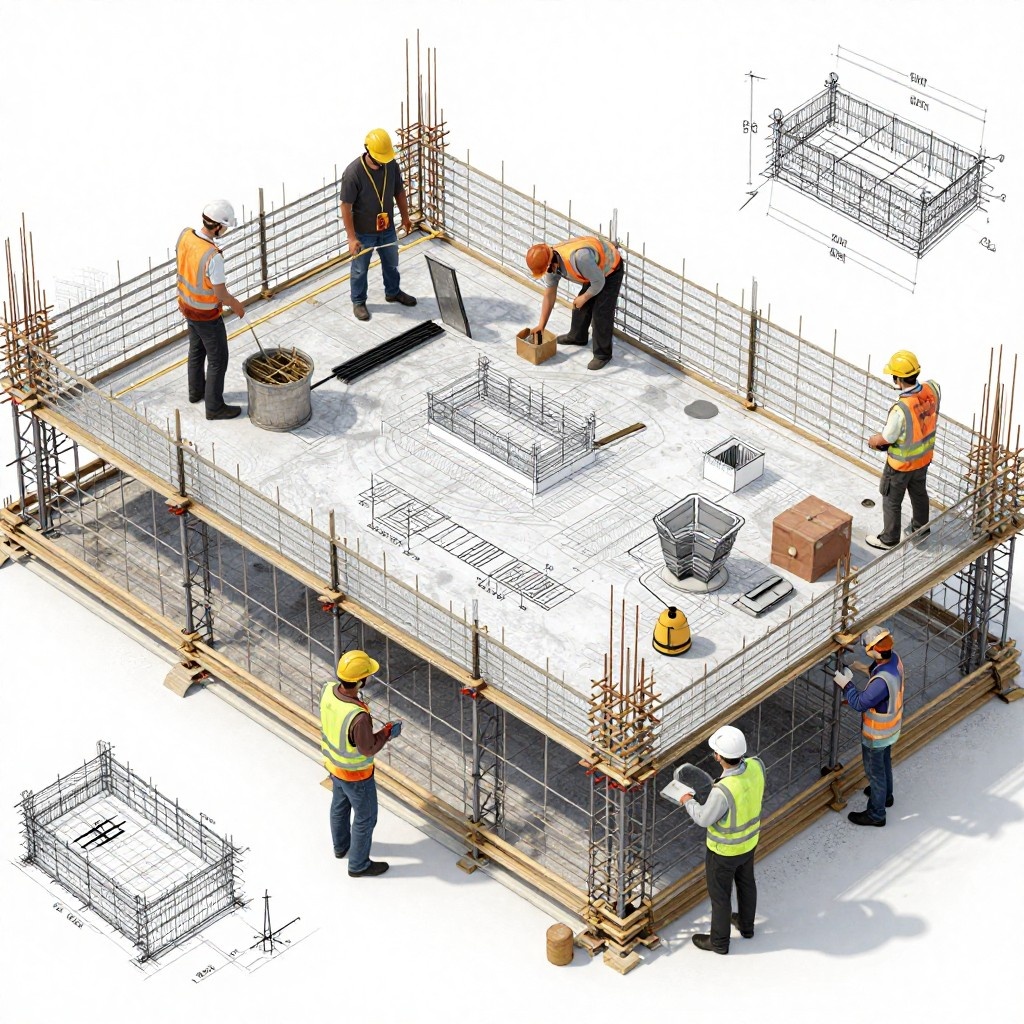What is BIM?
Building Information Modeling (BIM) is an electronic modelling technique for architectural and construction design. It combines several procedures and equipment that assist in the planning, designing, constructing, and managing of a structure. Below are the key details about BIM and its significance in the construction industry:
- Definition: BIM is an activity carried out with tools, technologies, and policies that create and manage ‘digital models’ of a facility's physical and logical attributes.
- 3D Modeling: It means using computer models to predict the real building and its main materials, construction, systems, and more.
- Data Integration: BIM consolidates data from several professions like architects, engineers and builders (A&E).
- Lifecycle Management: BIM is a process that is employed in planning, designing, constructing, operating and maintaining a building.

Significance of BIM in the Construction Industry:
- Improved Collaboration: BIM allows sensitive sharing of information between the architects, engineers and contractors such that everyone has the updated information at a particular time.
- Enhanced Visualization: Pre-construction visualization enables stakeholders to see the project before construction; their performance is enhanced while minimizing errors in the design phase.
- Cost and Time Savings: By utilizing BIM it is easy to eliminate waste, use the minimum amount of materials and possibly predict the time of completion and hence save on cost.
- Clash Detection: The software that is used in Building Information Modeling can calculate the presence of collisions between the utilities such as plumbing and air conditioning and, so avoid having to complete redundant work at the construction site.
- Sustainability: The energy consumption for a building can be evaluated through BIM, to design sustainable and energy-efficient building structures.
- Facility Management: Subsequent to construction BIM data assists in the management and sustenance of the building and enhances the lifecycle.
- In conclusion, BIM introduces a new concept in the construction Industry through enhancing planning, organizing and controlling the processes in the life cycle of a building.
BIM in Facility Management: How BIM Transforms Facility Management
BIM in Facility Management has been identified to have significant importance for enhancing the organizational performance of facility management in managing buildings after construction. Here's how BIM transforms facility management:
Role of BIM in Facility Management:
- Centralized Data Repository: BIM; Building information database which includes equipment data such as type, date for maintenance, any asset data and any other relevant data of a building is stored in one place.
- Real-time Updates: Building information updated to the time of the renovations or repair works can be readily available to the facility managers, providing the right information for decision-making.

- Maintenance Management: Facilities management maintenance is also enhanced via BIM since the BIM database includes a rich set of information about equipment, systems, and their state.
- Asset Tracking: BIM is useful to track facilities that comprise buildings like HVAC, lighting and plumbing; this makes it easy to service and replace them when they are due.
- Space Management: BIM is useful for space programming that makes it easier for facility managers to utilize space and plan for the next project.
- Energy Efficiency: Through BIM specific energy analysis may be made in order to assess the use of energy and the prospects of increasing energy saving and efficiency.
- Cost Management: With the use of BIM technology, managers can also be able to see the operation costs as well as the long-term planning for the performance of the building to help minimize the total expenses that may be incurred in the whole life of the building.

Significance of BIM in Facility Management:
- Enhanced Operational Efficiency: BIM makes it easier, quicker, and well-informed when making decisions on better building management.
- Cost Savings: Through effective compartmentalisation and planning of facilities, spaces and routing, and management of maintenance, installed systems and energy usage BIM is useful in lowering operational costs.
- Improved Longevity: BIM has an impact on the life cycle of the building and the systems, they will have to be maintained and they will last longer if some interventions are made on them.

BIM for Facility Managers: How BIM Empowers Facility Managers
BIM for Facility Managers is an all-encompassing guide to the management of facilities, one which furnishes facility managers with the tools that they need in several different ways. Here's how BIM proves useful for facility managers:
How BIM Empowers Facility Managers:
- Centralized Information Access: BIM encompasses all the data of a building for example layouts, systems and materials and since it is in one easily accessible place, one can always get the most up-to-date information as the facility manager.
- Efficient Maintenance: BIM relays elaborate data for the characteristics of building systems, for scheduling and coordinating maintenance procedures to avoid breakdowns and their subsequent costs.
- Asset Management: Through asset details such as warranties, service history and current stages of the asset life cycle BIM facilitates easy tracking and management of assets for example the HVAC and the lighting systems with ease hence helping in the decision making for replacement or updating of the assets.
- Space Optimization: By understanding layouts from BIM, facility managers can apply changes that make spaces more efficient now and further into the future regarding space distribution.
- Energy Monitoring: BIM facilitates energy modelling and assessment for facility managers and helps in tracking the energy use, and means to rectify the identified problems and reduce energy use.
- Improved Communication: This paper shows that incorporation of BIM enhances the flow of data between departments hence cutting on expenses and errors, and boosting on integration of workflows.
- Real-Time Problem-Solving: BIM enables facility managers to address operational problems within short notice to prevent excessively extended breaks throughout their buildings.

Overall Significance
- BIM provides facility managers with more control, information, and operating efficiency helps to reduce costs and consumptions, and makes sustainable buildings more operational at different stages of the facility’s life cycle. Building Information Modeling (BIM) is an electronic modelling technique for architectural and construction design. It combines several procedures and equipment that assist in the planning, designing, constructing, and managing of a structure. Below are the key details about BIM and its significance in the construction industry:
- What is BIM?
- Definition: BIM is an activity carried out with tools, technologies, and policies that create and manage ‘digital models’ of a facility's physical and logical attributes.
- 3D Modeling: It means using computer models to predict the real building and its main materials, construction, systems, and more.
- Data Integration: BIM consolidates data from several professions like architects, engineers and builders (A&E).
- Lifecycle Management: BIM is a process that is employed in planning, designing, constructing, operating and maintaining a building.

Significance of BIM in the Construction Industry:
- Improved Collaboration: BIM allows sensitive sharing of information between the architects, engineers and contractors such that everyone has the updated information at a particular time.
- Enhanced Visualization: Pre-construction visualization enables stakeholders to see the project before construction; their performance is enhanced while minimizing errors in the design phase.
- Cost and Time Savings: By utilizing BIM it is easy to eliminate waste, use the minimum amount of materials and possibly predict the time of completion and hence save on cost.
- Clash Detection: The software that is used in Building Information Modeling can calculate the presence of collisions between the utilities such as plumbing and air conditioning and, so avoid having to complete redundant work at the construction site.
- Sustainability: The energy consumption for a building can be evaluated through BIM, to design sustainable and energy efficient building structures.
- Facility Management: Subsequent to construction BIM data assists in the management and sustenance of the building and enhances the lifecycle.
In conclusion, BIM introduces a new concept in the construction Industry through enhancing planning, organizing and controlling the processes in the life cycle of a building.
Benefits of BIM in Facility Management
BIM is quite advantageous in the context of facility management because of its effectiveness, cost and decision-making purposes. Here are 10 key benefits:
1. Centralized Data Repository
BIM centralizes all the facility data from design details, maintenance records, and operation data in a single model to make it convenient for the facility manager.
2. Enhanced Maintenance Planning
Descriptive data about the building components makes advance planning for maintenance, to eliminate, where possible, failures or component breakdowns.
3. Improved Space Management
BIM offers space data to planners with great precision, which can assist efficiently with the allocation, utilization, and tracking of the spaces which serve workplace environments.
4. Lifecycle Cost Management
BIM is used to predict lifecycle costs by acting out future events and therefore assist in cash flow planning and cost control systems in overall facility management.

5. Streamlined Asset Management
The data about assets like HVAC systems or electrical panels can be tied to their equivalents in the BIM model making the task of asset management easier.
6. Improved Solution and Information Sharing
The use of BIM enhances coordination between maintainers and other players such as contractors since they all get hold of the up-to-date building information.
7. Renewable Resources and Energy Conservation
Following the data gained from BIM, facility managers are in a position to evaluate energy usage, look for potential issues with energy efficiency and apply sustainable solutions efficiently.
8. Benefits in Strategic Planning of Renovation and Retrofitting
Renovations require planning with up-to-date information about the existing condition of a building, and through BIM models, organisations incur lower risks and costs by using accurate as-built information.
9. Risk Mitigation
Due to their nature where BIM provides detailed documentation and visualization of structures and facilities, it minimizes operational risks regarding safety and compliance among the structures and facilities.
10. Digital Twin Integration
BIM models help in the generation of digital twins, where the performance of the building can be monitored and edited in real-time to the best effect of the facility manager.
Challenges faced in BIM implementation for Facility Management
Issues Experienced When Implementing BIM for Facility Management
Implementing BIM in facility management offers many advantages, but several challenges can arise during adoption and execution:
- High Initial Costs
The acquisition of various BIM software and hardware and the training of staff tends to be costly and may discourage some organizations primarily those that are small-scale.
- Lack of Skilled Personnel
A broad challenge is managers within the facility management capacities may not possess the competencies to engage the BIM tools and therefore they shall require substantial training time and investment.

- Data Integration Issues
The use of BIM supports the integration of FMS data into BIM or the facilities management data repository which may be in different formats and thus BIM integration into the current system can be challenging.
- Resistance to Change
Those who are used to traditional ways of managing facilities may not embrace the new advanced technologies and practices.
- Inconsistent Data Quality
Construction participants have to gain consensus over the contents of BIM models and update those contents as necessary. This is because changing numbers affect comparison, and conflicting, out-of-date numbers produce poor decisions.
- Standardization Challenges
Currently, the standards for BIM in facility management are not so well established across the world, which results in the problematic match of the data and various parties involved in the process, as well as the software used by these parties.
In the usual multiple-layer model architecture, the complexity of model maintenance is identified as one of the key challenges.
Updating the design of a building information model after construction is completed means that there has to be a constant feed of input, which can often prove to be difficult if there is no system in place for this purpose.
- Interoperability Issues
Most current BIM software tools may not be compatible with one another in full; this makes sharing and transferring of data rather challenging, especially between various stakeholders.
- Security and Privacy of Information
BIM models are rich in building information, and therefore the models are at risk of cyber-attacks on data and privacy of access to such information.
It also noted that there is still little awareness and understanding of messages about potential societal harms among the general population and professionals.
There can be a situation when the workers in facility management teams do not know all the possibilities of BIM or how to implement it correctly, which results in the underutilization of the technology.
Conclusion
This paper aims at establishing that Building Information Modeling (BIM) has transformed how facility managers work, by providing a centralized asset database that enhances performance. Thus, through the acquisition of a large amount of information on the construction systems, assets, and spaces, the BIM contributes to the optimization of management of the maintenance schedule inventory control, and energy in use. It allows the facility managers to control the spaces better to minimize the costs of running the facility while also providing for proper maintenance and quick identification of problems affecting building systems to bring about their maintenance. Enhanced interprofessional relations and coordination optimize the workflow of facility management.
FAQs:
Can BIM help with sustainability in facility management?
Sure! Using BIM (Building Information Modeling) really helps make buildings more sustainable. It gives detailed information about building systems, materials, and energy use, which makes it easier for facility managers to control consumption. Over time, BIM can also track how well the building uses energy, saves water, and reduces waste. This helps teams make smarter decisions and meet green building standards like LEED or BREEAM.
How can facility managers use BIM for predictive maintenance?
Facility managers can use BIM along with data from sensors and IoT devices to do predictive maintenance. By connecting this real-time data to the BIM model, they can constantly monitor equipment and environmental conditions. This helps spot unusual patterns or warning signs before something breaks down.
For example, it can predict when HVAC systems or electrical parts might need maintenance based on how much they’re used or how they wear out over time. This proactive approach helps reduce unexpected downtime, extends the life of assets, keeps maintenance more organized, and lowers operating costs while improving overall efficiency.
How does BIM support asset management in facilities?
BIM is really useful for asset management because it acts like a central database where all asset information—like specs, maintenance history, and manufacturer details—is stored. Each piece of equipment, from HVAC systems to lighting fixtures, is linked to the BIM model. This helps facility managers track an asset’s life cycle, monitor performance, and plan when to repair or replace it. It also makes it easier to keep track of assets, make decisions about upgrades or repairs, and stay compliant with regulations. Overall, BIM helps manage physical assets more strategically, saving both time and costs.
How can BIM help in extending the lifespan of facility assets?
BIM helps facility managers get more value out of assets by keeping detailed records about each asset’s history, condition, and specifications. With this information, they can plan proactive, time-based maintenance and catch potential issues before they become serious problems. BIM also supports smarter decisions about when to repair, upgrade, or replace equipment, which helps extend asset life and use them more efficiently. By making it easier to schedule routine checks and highlight what needs attention, BIM helps reduce downtime, cut repair costs, and keep everything running smoothly.




